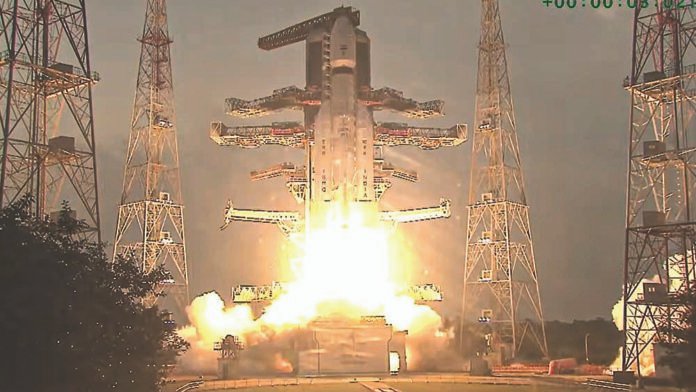India’s heaviest communication satellite, CMS-03, weighing 4,410 kg, was successfully placed into the intended orbit on Sunday by the new-generation ‘Bahubali’ rocket, LVM3-M5, ISRO said. The multi-band communication satellite will provide services over a wide oceanic region, including the Indian landmass, and has replaced the GSAT-7 series launched in 2013.
ISRO chairman V. Narayanan said the “4,410 kg satellite was precisely injected” into the Geosynchronous Transfer Orbit (GTO). Referring to the LVM3 as ‘Bahubali’ for its heavy-lift capability, Narayanan said the rocket’s last launch was the “most prestigious Chandrayaan-3 mission,” and Sunday’s success brought “yet another pride” to the nation. All eight LVM3 launches, including its experimental mission, have been successful.
Designed for a 15-year mission life, CMS-03 is “yet another shining example of Atmanirbhar Bharat,” Narayanan said. Despite weather challenges, ISRO scientists ensured the mission’s success through dedicated efforts.
Before this, ISRO depended on French Guiana’s Kourou launch base for heavier satellites. The last such launch was GSAT-11, weighing 5,854 kg, on December 5, 2018, using France’s Ariane-5 rocket.
The LVM3-M5, a three-stage launch vehicle with two solid strap-ons (S200), a liquid core stage (L110), and a cryogenic stage (C25), gives ISRO full self-reliance to launch communication satellites up to 4,000 kg in GTO. Also known as GSLV Mk-III, it was developed using entirely indigenous technology, including the C25 cryogenic stage.
The LVM3’s first development flight, the Crew Module Atmospheric Re-entry Experiment (CARE), was launched in December 2014, marking the beginning of its successful record. Its previous mission, Chandrayaan-3, made India the first country to land near the lunar South Pole in 2023.
ISRO explained that different rockets are used depending on mission objectives and target orbits. The Polar Satellite Launch Vehicle (PSLV) is its most trusted and versatile launcher, capable of carrying payloads up to 1,750 kg. For smaller satellites (up to 500 kg) in Low Earth Orbit, ISRO uses the Small Satellite Launch Vehicle (SSLV). The GSLV, with a cryogenic upper stage, carries payloads of around 2,200 kg, while the LVM3 can lift over 4,000 kg to GTO and up to 8,000 kg to Low Earth Orbit.
The LVM3-M5 is the fifth operational flight of the vehicle. The two S200 solid rocket boosters, developed at the Vikram Sarabhai Space Centre, Thiruvananthapuram, provide the thrust for lift-off, while the L110 liquid stage uses two Vikas engines developed at the Liquid Propulsion Systems Centre.
ISRO said the LVM3 will also serve as the launch vehicle for the ambitious Gaganyaan human space mission, to be known as the Human Rated LVM3 (HRLV).
‘Bahubali’ rocket lifts India’s heaviest satellite
Sriharikota (Andhra Pradesh) Nov 2 (PTI)

